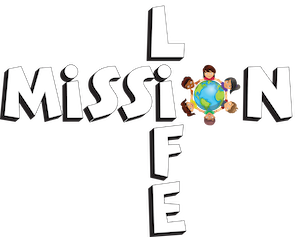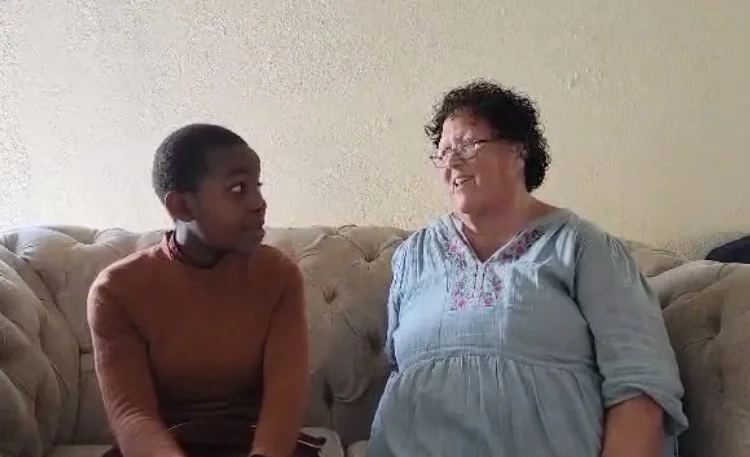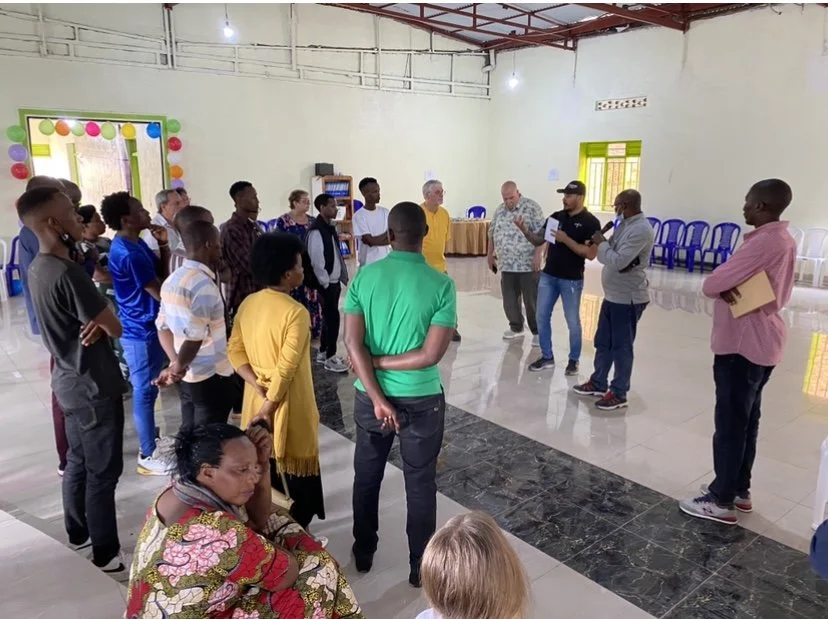The Kimisagara Model - A Place for Worship, Community and Hope for the Next Generation
Our mission team with the moms and teachers of the Child Hope Center at Hermon Church in Kimisagara - Kigali, Rwanda
Written by: Jenn O’Neill
Rwanda has made incredible progress since the atrocities of the 1994 genocide. For those who visit, it is inspiring to witness the level of forgiveness its people have embraced to move on from the country’s violent history.
Rwanda is seen as one of the leading countries in Africa when it comes to economic development. Even with the pandemic, according to the World Bank, Rwanda’s economy grew 11 percent in 2021, but the third world country still faces many social challenges. Even though the poverty level is expected to return to pre-pandemic levels soon, over half of the country’s population continues to live in poverty (World Bank, 2021).
Malnutrition has declined but 38 percent of children are stunted and they often do not receive healthy and diverse foods (Unicef, 2019).
Education is another area of challenge. While most children enroll in primary school, only 71 percent complete this level. The numbers significantly fall off at the next level. “Only 6 percent of children start secondary school at the proper age of 13” and, “only 35 percent enroll at 18,” (Unicef, 2019.)
There are many reasons for this including families inability to pay for required school uniforms and supplies, feminine hygiene challenges as girls reach adolescence and children who are kept home to help run family businesses.
Schools are also challenged with overcrowded classrooms and many educators are not properly trained in their areas of teaching or in English which is the new requirement (Unicef, 2019).
Finally, even though there is a push from the Rwandan government to provide resources for early education programs, proper funding and data collection remain a challenge (Unicef, 2019).
The moms welcome our team to their new space at Hermon Church.
These statistics underscore the continued need for Mission Life’s child development program model at our Child Hope Centers in Kigali. After 3 years of incredible support from donors, collaboration with our partner, Africa Hope Initiatives, along with help from the non-profit organization, www.microseeds.org, this May, we celebrated the opening of the brand new, Hermon Church, which is also home to our Child Hope Center in Kimisagara.
This Mission Life model with our partner, Africa Hope Initiatives benefits the entire community. A group of women now have a place to worship, new followers of Christ are discovering fellowship and children are inspired and have hope at the Child Hope Center.
Jeremie recites bible verses for our mission team at Hermon Church.
We are beginning to see the harvest of God’s fruit in Kimisagara. Jeremie is one of the first children to attend the Child Hope Center. He is 14 now and through a relationship with Pastor Eric, he has developed a love for the bible. He keeps his bible in his school bag and whenever he completes his work in class or leaves the Child Hope Center, he looks forward to quality time reading the bible. In fact, he has memorized many verses. He is inspired by Pastor Eric and he plans to become a preacher.
When you ask Jeremie how Pastor Eric inspires him he says, “The way he encourages me and the way he asks me to memorize different verses. After reading the assigned verses, I go in deeper and begin to read even more verses.”
He looks forward to becoming a preacher so he can help others know the word of God.
Patricia and Sandrine spend some quality time together at the Child Hope Center.
Sandrine is also 14. When her sponsor, Patricia Carroll first met her, Sandrine was very quiet and shy. In May, when Patricia visited her at the Child Hope Center, she was greeted by an outgoing, mature teenager who carried on conversations in English. Patricia says she exudes confidence and kindness. Before Sandrine had a sponsor she says her life was difficult but now she enjoys having a caring, second mother and she’s learning valuable life lessons at the Child Hope Center.
“They give me food. They teach me how to respect elders as my best friend. When I come here, they teach me to care for my friends, speak in a good way and share stories in a good way for everyone who can hear,” says Sandrine.
Vainer Ndanyuzwe, a teacher at the Child Hope Center in Kimisagara.
23 year old Vainquer Ndanyuzwe started teaching at the Child Hope Center during the pandemic. He grew up attending Harvest Christian Church. During the pandemic, he created assignments to drop off at the childrens’ homes. Now he enjoys teaching them face to face.
“I don’t take them as a student. I take them as my younger brother and my little sister. Our mission as a Christian is to give life. I’m here to teach the children, helping them to be happy and helping them to do anything that can make their life become better,” he says.
These outcomes are the direct result of generous giving from U.S. families who sponsor our children and donors who give to our cause. Through sponsorship, each child receives a daily hot meal. School fees are taken care of so they never experience a delay in their education. They receive biblical teachings, help with homework and they participate in extracurricular activities such as art and sports so they can discover their talents.
Child Hope Center teachers and volunteers huddle with our team to prepare for a child activity at Hermon Church.
But sponsorship has a ripple effect. When families sponsor a child ($39 a month), they’re encouraged to get to know each other through video messages. It gives families an opportunity to teach their own children the importance of giving and fellowship. It gives us all an opportunity to find purpose.
Like Vainquer who devotes his life to teach the children, Patricia who takes the time to develop a meaningful relationship with her sponsor child, Sandrine, and donors who support our programs through sustainable giving, we all have an opportunity to leave an imprint on hundreds of childrens’ lives and their futures.
In 2020, we opened our second Child Hope Center in Kimironko. Here, the children are younger and they come every day for early education classes. They are also learning English. It is our hope to expand and offer primary school here in the future but we will need more help to make this program sustainable first. We are also hoping to open our first center in the rural village of Batima this fall.
Learn more about our centers and how you can be a part of making this happen.
References Cited:
https://thedocs.worldbank.org/en/doc/bae48ff2fefc5a869546775b3f010735-0500062021/related/mpo-rwa.pdf.






